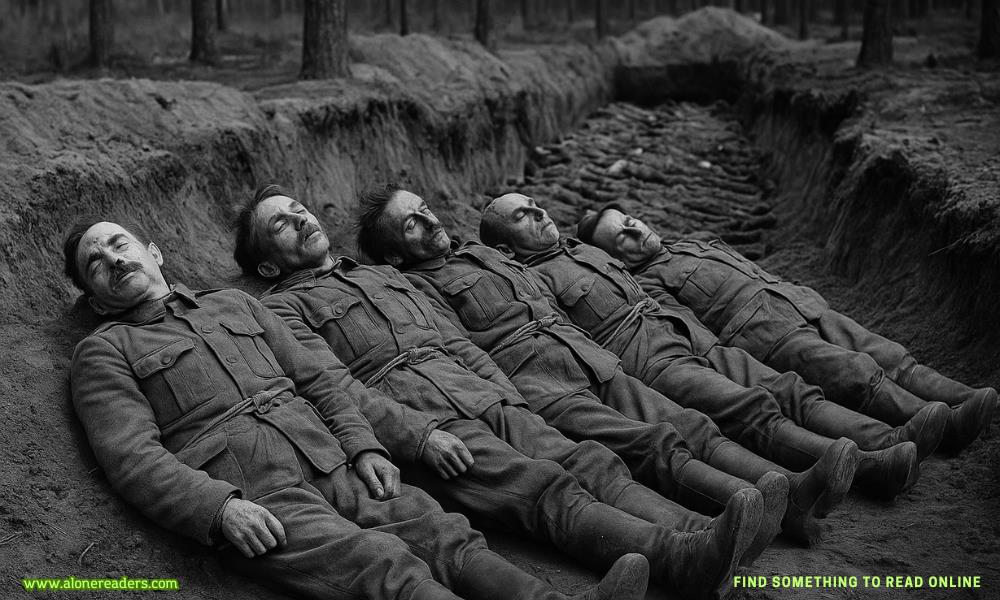
In the spring of 1940, deep within the quiet, wooded expanse of the Katyn Forest near Smolensk in western Russia, one of the most heinous crimes of the Second World War unfolded. Over the course of several weeks, Soviet NKVD officers executed more than 22,000 Polish military officers, intellectuals, police officers, and other members of the elite class. This calculated and systematic massacre, known to history as the Katyn Forest Massacre, remained one of the most closely guarded secrets of the Soviet Union until the late 20th century. Its revelation would become a symbol of suppressed truth and a painful chapter in Polish-Russian relations.
The victims of Katyn were not ordinary soldiers; they represented the backbone of the Polish intelligentsia and leadership. Among the dead were professors, doctors, engineers, priests, and seasoned military commanders—individuals who, if left alive, could have formed the foundation of a free and democratic Poland. Following the joint invasion of Poland by Nazi Germany and the Soviet Union in September 1939 under the Molotov-Ribbentrop Pact, the eastern portion of Poland came under Soviet control. Thousands of Polish officers were captured and placed in Soviet prison camps such as Kozelsk, Starobelsk, and Ostashkov.
By March 1940, Soviet leadership, including Stalin and NKVD chief Lavrentiy Beria, had signed off on the decision to execute these prisoners. Their rationale was both ideological and strategic. The Soviet regime viewed the Polish military and intellectual elite as a potential threat to its grip on power in occupied Poland. Neutralizing this group was seen as a way to eliminate the possibility of resistance or nationalist resurgence.
The executions were meticulously planned and executed in remote areas such as the Katyn Forest, Mednoye, and Kharkiv. The prisoners were transported in small groups, told they were being relocated, and then shot in the back of the head. Mass graves were dug in advance, and the killings were carried out in isolation to prevent any leaks. For decades, the Soviet Union denied any involvement in the massacre, instead blaming the Nazis after the mass graves were discovered by German troops in 1943 following their invasion of the USSR.
The discovery of the graves near Katyn prompted the Nazis to invite international observers, including representatives of the Red Cross and journalists from various countries, to witness the exhumations. While the Germans sought to exploit the massacre for their own propaganda purposes, the evidence clearly pointed to a time of death that predated the German occupation of the area—spring 1940—when the region was firmly under Soviet control. Nonetheless, the Allied powers, deeply invested in their wartime alliance with the USSR, largely accepted the Soviet denial or at least chose not to confront it publicly.
After the war, the Soviet narrative continued to dominate, especially in the Eastern Bloc. For decades, even mentioning the Katyn Massacre in Communist Poland could result in censorship or persecution. The memory of the victims was kept alive mostly in exile communities and through underground publications. It wasn’t until the 1980s, amid the loosening grip of the Soviet regime and increasing pressure from Poland’s Solidarity movement, that the truth began to reemerge into public discourse.
In 1990, Soviet President Mikhail Gorbachev officially acknowledged Soviet responsibility for the massacre, admitting that it was carried out by the NKVD on Stalin’s orders. This admission marked a significant moment in post-Cold War reconciliation efforts but did little to soothe the decades of pain and mistrust that the cover-up had generated. Further documents released in the 1990s, including signed orders and internal memos, confirmed the extent of the planning and Stalin’s direct involvement.
The legacy of the Katyn Massacre remains deeply embedded in Polish national memory. It is not only a story of brutal war-time repression but also a narrative of historical manipulation, silence, and eventual reckoning. Annual commemorations, memorials, and scholarly work continue to ensure that the victims are not forgotten. In 2010, tragedy struck again when a plane carrying Polish President Lech Kaczyński and dozens of other dignitaries crashed near Smolensk on their way to a Katyn commemoration, further deepening the symbolic weight of the massacre in Polish consciousness.
Katyn is a reminder of the perils of totalitarianism and the capacity of state machinery to carry out large-scale atrocities while masking them under layers of deception. The massacre also illustrates the broader complexities of World War II, where alliances often required moral compromises and the suppression of inconvenient truths.
Efforts continue to this day to identify all the victims and to preserve the memory of those who perished. In Poland, Katyn is not just a historical episode; it is a symbol of national suffering and resilience, a focal point for discussions about truth, justice, and accountability in international relations. The tragedy of Katyn also serves as a cautionary tale for future generations about the importance of historical transparency and the long-term consequences of state-sponsored lies.
Although the Russian government has acknowledged the Soviet role in the massacre, full legal accountability or classification of the event as a war crime or genocide has been evaded. Many families of the victims still await complete archival access, proper restitution, and formal recognition. The demand for justice remains strong, as does the resolve to prevent history from being rewritten once again.
In the global context of wartime atrocities, the Katyn Forest Massacre stands out for its precision, concealment, and prolonged cover-up. It challenges the simplistic binaries often used to frame World War II and underscores the necessity of confronting all crimes, regardless of the perpetrator’s political alignment. The ghosts of Katyn still haunt the woods where they fell, reminding the world that history, if buried, will eventually find its voice.